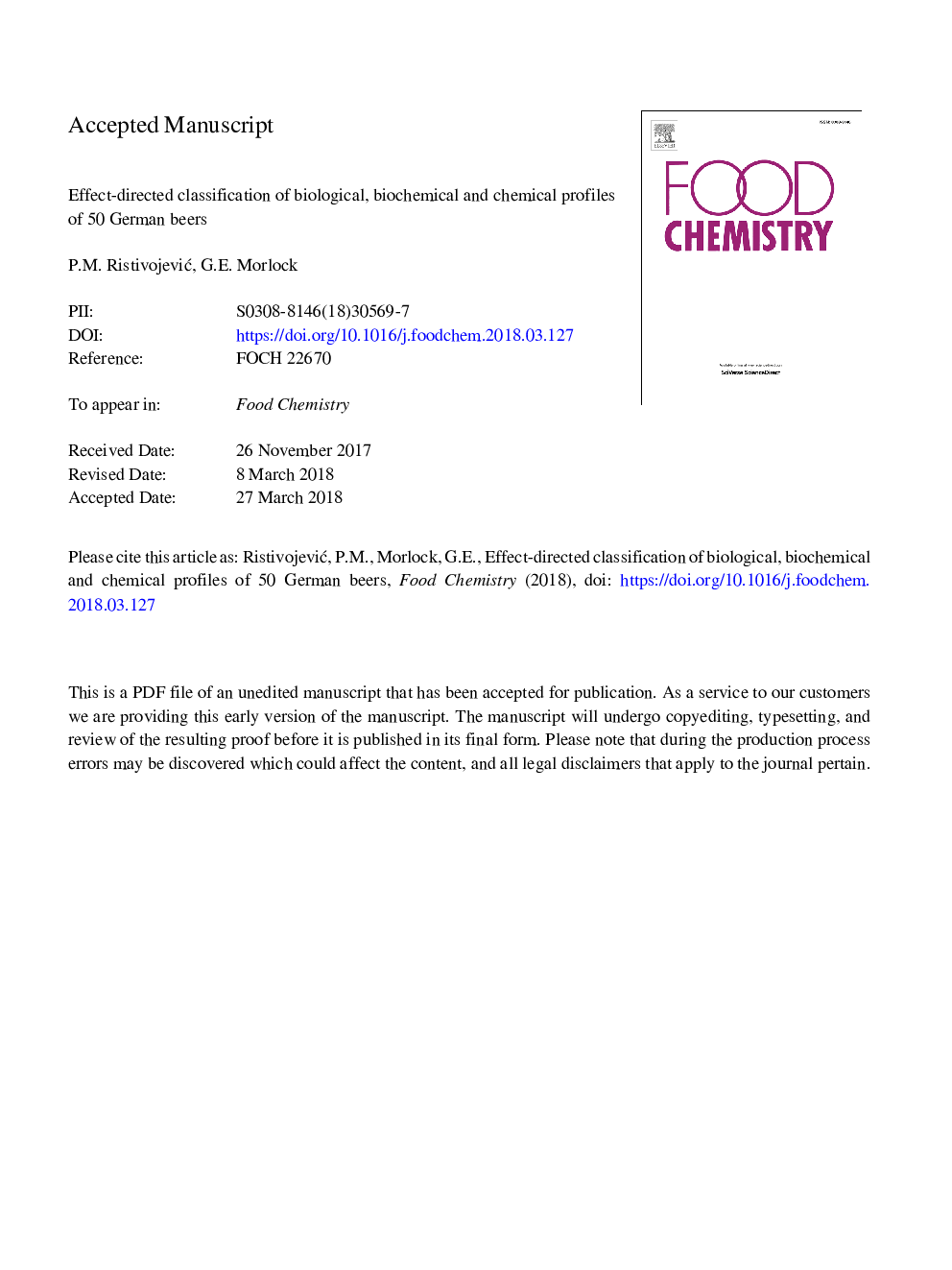| Article ID | Journal | Published Year | Pages | File Type |
|---|---|---|---|---|
| 7585022 | Food Chemistry | 2018 | 38 Pages |
Abstract
Biological and biochemical fingerprints were investigated for the first time for the feasibility of effect-directed classification, and thus, to allow the choice of a distinct beer with regard to beneficial health effects. A high-performance thin-layer chromatography method was newly developed and combined with in situ effect-directed analysis for profiling 50 German beers for multipotent active compounds, and thus, their health-related potential. Discovered multipotent active zones were online eluted and characterized by high resolution mass spectrometry. For example, isoxanthohumol, iso-α-ad/n-humulone or its isomers, desdimethyl-octahydro-isocohumulone and ad/n-humulone were proven as antimicrobial compounds, isoxanthohumol as an acetylcholinesterase inhibitor, and isoxanthohumol and iso-α-ad/n-humulone or its isomers as radical scavengers. Investigating multivariate data analysis of effect-directed fingerprints for the first time, the pattern recognition and classification results showed the power of clustering non-alcoholic beers from other types of beer, or it showed the differentiation of dark and non-alcoholic beers.
Related Topics
Physical Sciences and Engineering
Chemistry
Analytical Chemistry
Authors
P.M. RistivojeviÄ, G.E. Morlock,
